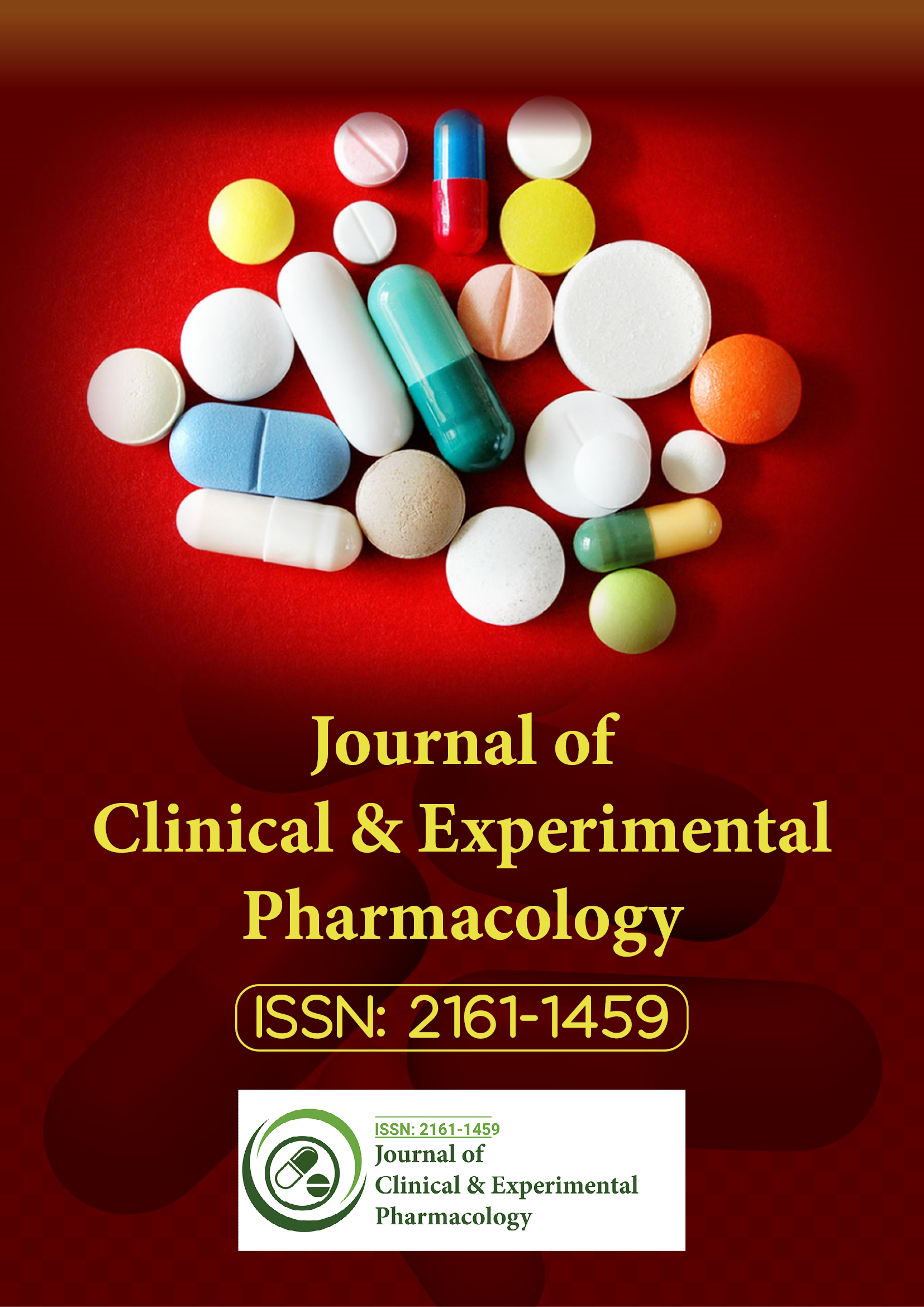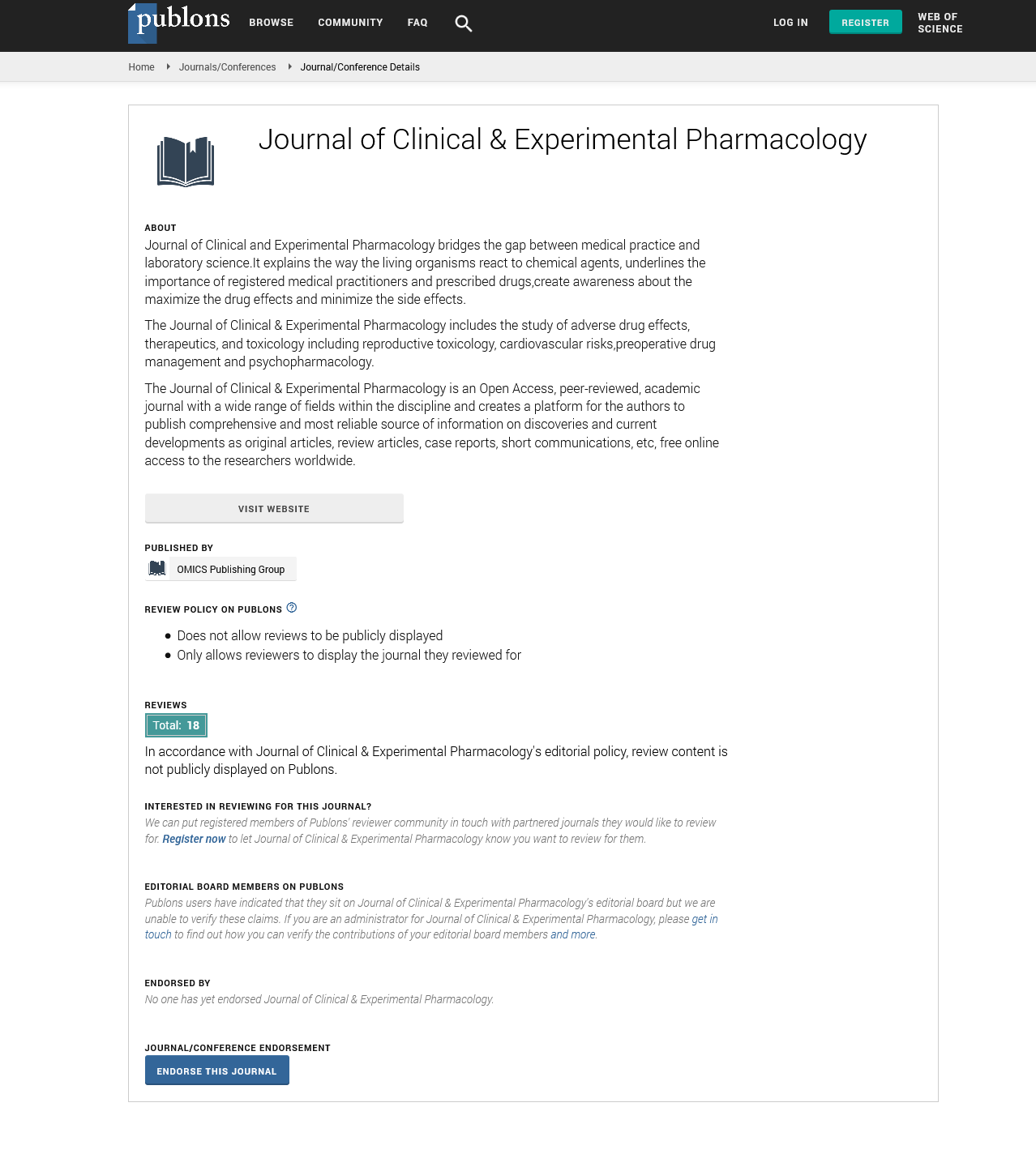Indexed In
- Open J Gate
- Genamics JournalSeek
- China National Knowledge Infrastructure (CNKI)
- Ulrich's Periodicals Directory
- RefSeek
- Hamdard University
- EBSCO A-Z
- OCLC- WorldCat
- Publons
- Google Scholar
Useful Links
Share This Page
Journal Flyer

Open Access Journals
- Agri and Aquaculture
- Biochemistry
- Bioinformatics & Systems Biology
- Business & Management
- Chemistry
- Clinical Sciences
- Engineering
- Food & Nutrition
- General Science
- Genetics & Molecular Biology
- Immunology & Microbiology
- Medical Sciences
- Neuroscience & Psychology
- Nursing & Health Care
- Pharmaceutical Sciences
Commentary Article - (2025) Volume 15, Issue 2
Pharmacoepidemiology and Public Health: Understanding the Population-Level Impact of Pharmaceutical Interventions
Liam Wang*Received: 24-Mar-2025, Manuscript No. CPECR-25-28863; Editor assigned: 26-Mar-2025, Pre QC No. CPECR-25-28863 (PQ); Reviewed: 10-Apr-2025, QC No. CPECR-25-28863; Revised: 18-Apr-2025, Manuscript No. CPECR-25-28863 (R); Published: 25-Apr-2025, DOI: 10.35248/2161-1459.25.15.473
Description
Pharmacoepidemiology is the study of the use and effects of drugs in large populations. As a hybrid discipline combining elements of pharmacology and epidemiology, it seeks to understand patterns of drug utilization and the outcomes associated with pharmaceutical interventions. By analyzing real-world data, pharmacoepidemiology supports informed decision-making in clinical practice, regulatory policy and public health strategy. With the increasing availability of large-scale health databases and electronic medical records, this field has gained prominence in identifying drug-related risks, assessing medication effectiveness in routine care and guiding rational prescribing.
Scope and objectives
The primary objective of pharmacoepidemiology is to evaluate both the beneficial and adverse effects of drugs in populations. Unlike Randomized Controlled Trials (RCTs), which are conducted in controlled settings with narrowly defined patient groups, pharmacoepidemiologic studies observe medication use in real-world scenarios. This allows for broader assessment of drug behavior across diverse patient populations, including those with comorbidities, polypharmacy, or varying degrees of medication adherence. Key goals include:
- Monitoring patterns of drug utilization.
- Identifying and quantifying Adverse Drug Reactions (ADRs).
- Evaluating drug effectiveness outside clinical trial settings.
- Assessing medication adherence and persistence.
- Studying drug interactions and prescribing trends.
Data sources
Pharmacoepidemiologic research relies on multiple data sources, including:
Administrative claims databases: These databases contain billing and diagnostic information from insurers and healthcare providers. They are useful for studying prescription patterns, healthcare utilization and long-term treatment outcomes.
Electronic Health Records (EHRs): EHRs provide clinical details, laboratory results and diagnostic codes that allow for in-depth analysis of patient care and drug effects.
Disease registries and prescription databases: Registries track specific diseases and treatments, while prescription databases record dispensing patterns across pharmacies or health systems.
Spontaneous reporting systems: Systems like the FDA’s MedWatch or the WHO’s VigiBase collect voluntary reports of ADRs from clinicians and patients. Though subject to underreporting and bias, these systems are useful for signal detection.
Study designs
Pharmacoepidemiologic studies employ various observational study designs. The choice of design depends on the research question, available data and the feasibility of data collection.
Cohort studies: These studies follow a group of individuals exposed to a drug and compare outcomes with those unexposed or exposed to a different drug. Cohort studies are well-suited for estimating incidence rates and studying time-to-event outcomes.
Case-control studies: Case-control studies compare patients who have experienced a particular outcome (cases) with those who have not (controls), examining past drug exposures. They are efficient for studying rare adverse events.
Cross-sectional studies: These provide a snapshot of drug use and associated factors at a particular point in time but are limited in assessing causality.
Case-crossover and self-controlled case series: These designs use each patient as their own control, reducing confounding by individual characteristics. They are useful for studying transient exposures and acute outcomes.
Pharmacovigilance and risk management
One of the central functions of pharmacoepidemiology is to support pharmacovigilance—the ongoing monitoring of drug safety post-approval. New safety signals often emerge only after widespread use, making post-marketing surveillance essential. Pharmacoepidemiologic methods contribute to signal detection, risk quantification and benefit-risk assessments. Regulatory agencies increasingly require risk management plans that integrate real-world evidence to monitor and mitigate potential harms.
Effectiveness vs. efficacy
While clinical trials determine a drug’s efficacy under controlled conditions, pharmacoepidemiologic studies assess its effectiveness in everyday practice. Differences in patient characteristics, adherence and concomitant therapies can significantly influence outcomes in routine settings. Understanding these distinctions helps healthcare providers make better-informed decisions and tailors treatment recommendations to individual and population-level needs.
Medication adherence and utilization patterns
Adherence to prescribed therapies is a key determinant of treatment success. Pharmacoepidemiologic studies analyze rates and patterns of adherence, persistence and discontinuation across drug classes and populations. They help identify barriers to adherence, such as side effects, cost, or complexity of regimens. Additionally, these studies uncover inappropriate prescribing practices, underuse of indicated therapies, or overuse of potentially harmful medications especially in vulnerable populations such as the elderly.
Applications in public health and policy
Pharmacoepidemiology plays an instrumental role in shaping drug policy and health system planning. Data from this field inform decisions about formulary inclusion, reimbursement and treatment guidelines. It also supports Health Technology Assessments (HTAs) and cost-effectiveness analyses by providing real-world outcome data. During public health emergencies, such as pandemics, pharmacoepidemiologic research helps evaluate the population-level impact of therapeutic interventions and guides resource allocation.
Challenges and limitations
Despite its many applications, pharmacoepidemiology faces several challenges. Observational studies are susceptible to biases such as confounding by indication, selection bias and information bias. Advanced statistical methods, including propensity score matching and instrumental variable analysis, are used to address these limitations, though they cannot fully eliminate them. Data quality and completeness can also affect the validity of findings. Inconsistencies in coding, missing data, or lack of detail on over-the-counter medications and lifestyle factors may hinder interpretation.
Conclusion
Pharmacoepidemiology serves as a bridge between pharmacologic science and population health. By analyzing drug use and outcomes across real-world settings, it provides insights that complement clinical trial evidence and contribute to safer, more effective medication use. As health data systems grow and analytic methods evolve, the role of pharmacoepidemiology in healthcare decision-making is expected to expand further.
Citation: Wang L (2025). Pharmacoepidemiology and Public Health: Understanding the Population-Level Impact of Pharmaceutical Interventions. J Clin Exp Pharmacol. 15:473.
Copyright: © 2025 Wang L. This is an open-access article distributed under the terms of the Creative Commons Attribution License, which permits unrestricted use, distribution and reproduction in any medium, provided the original author and source are credited.

